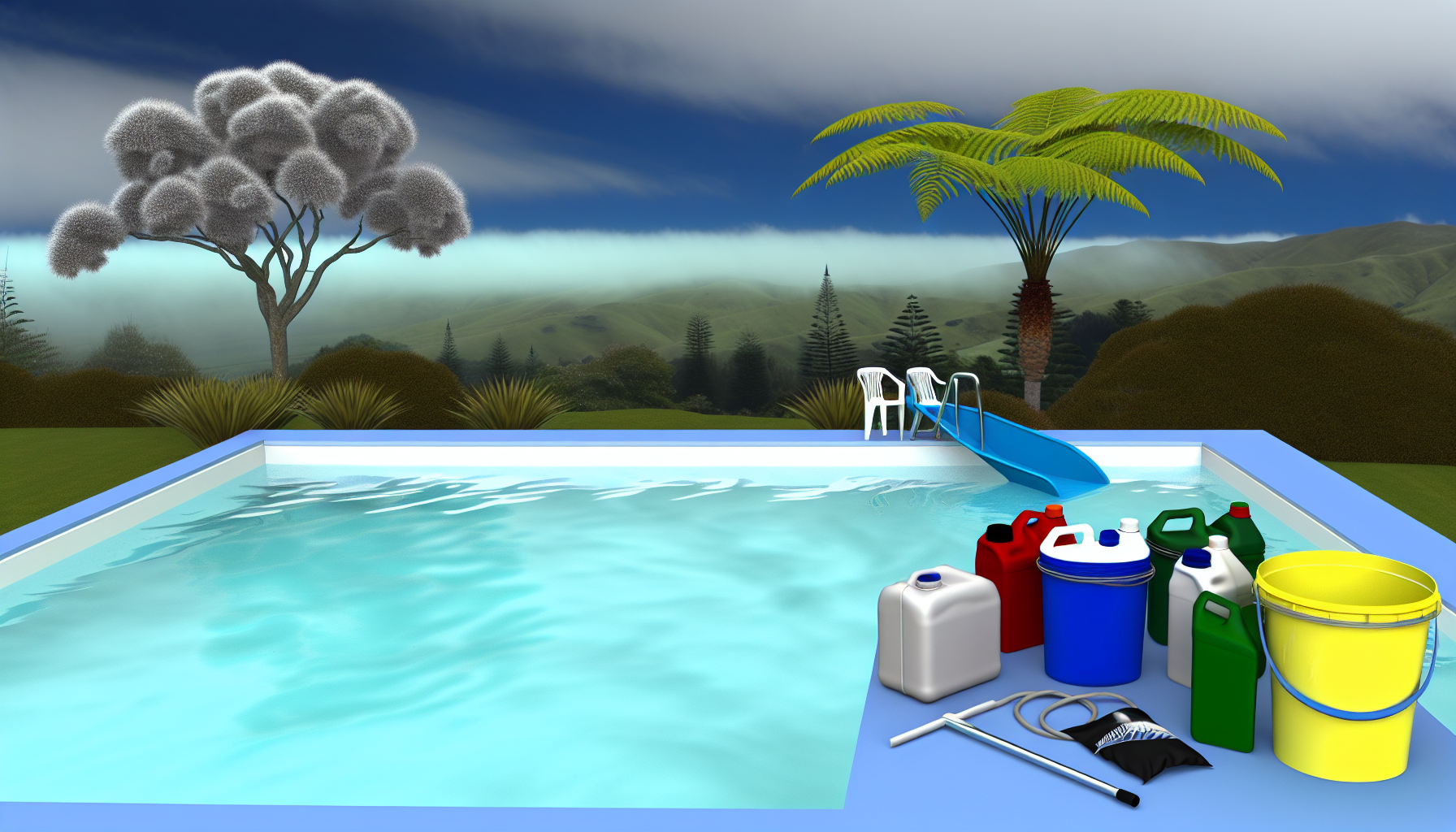So, you shocked your pool, expecting crystal-clear water, and now it’s all cloudy? Annoying, right? Don’t worry—this is pretty common, and there’s a reason for it. Let’s break it down and figure out what’s going on.
What’s Happening?
After you shock your pool, all that extra chlorine starts working hard to kill bacteria, algae, and whatever else might be lurking in the water. But sometimes, instead of leaving a sparkling pool behind, it creates a cloudy mess. Here’s why:
- Dead Algae and Contaminants – If your pool had algae or a lot of gunk in it, shocking kills it off, but now all that dead stuff is still floating around, making the water murky.
- Too Much Pool Shock – Adding too much chlorine or calcium-based shock (like cal-hypo) can lead to cloudy water, especially if your chlorine levels are already high.
- High Calcium Levels (Hard Water) – If you used a calcium-based shock and your water already has high calcium levels (which happens in some parts of New Zealand), it can cause cloudiness.
- Poor Filtration – Your filter’s job is to clean up the mess after shocking. If it’s not running long enough or not working well, the cloudy water will hang around.
- pH and Alkalinity Imbalance – If your pH or alkalinity is off (too high or too low), it affects how the chlorine works and can contribute to murky water.
What You Should Do
Alright, now that we know what’s causing the problem, here’s how to fix it:
✅ Run Your Filter – A Lot
Your pool filter is your best friend right now. Run it continuously for at least 24+ hours after shocking. If it’s a sand filter, it might need a backwash. For cartridge filters, cleaning the filter might help.
✅ Test the Water
Head over to Bunnings NZ or Mitre 10 and grab a pool testing kit if you don’t already have one. Check your chlorine, pH, alkalinity, and calcium hardness. If the numbers are off, adjust them accordingly.
- Chlorine should be between 1-3 ppm
- pH should be around 7.2-7.6
- Alkalinity around 80-120 ppm
✅ Vacuum Up the Gunk
If dead algae or debris is making your water cloudy, vacuum the pool to waste (skip the filter if you have a multi-port valve). This helps remove the residue directly instead of sending it through the filter.
✅ Use a Pool Clarifier (If Needed)
If the cloudiness isn’t clearing fast enough, a pool clarifier can help by clumping tiny particles together, making them easier for the filter to catch. You can grab one from stores like Pool & Spa Warehouse or your local pool supply shop.
✅ Give It Some Time
Sometimes, the cloudiness just needs some time to settle. If you’ve done everything above but the water is still a bit hazy, wait a day or two while keeping the filter running and checking the chemical levels.
How to Prevent Cloudy Water Next Time
If you don’t want to deal with cloudy water every time you shock your pool, follow these tips:
- Shock at night – The sun burns off chlorine, so shocking in the evening helps it work more effectively.
- Pre-dissolve powdered shock – If you’re using a granular shock, dissolve it in a bucket of water first, then pour it in. This prevents undissolved particles from clouding the water.
- Use non-chlorine shock occasionally – If your chlorine levels don’t need a huge boost, a non-chlorine shock can help prevent extra cloudiness.
- Monitor and maintain chemical levels – Regular water testing keeps things balanced and prevents issues before they start.
The Bottom Line
Cloudy water after shocking isn’t the end of the world—it just means your pool needs a bit more time (and maybe some extra help filtering and balancing). Keep the pump running, test your water, and be patient. In a day or two, your pool should be back to crystal clear—just in time for a swim!
Got more pool maintenance questions? Check out Swimart NZ for more expert resources and products to help keep your pool in top shape.


Leave a Reply